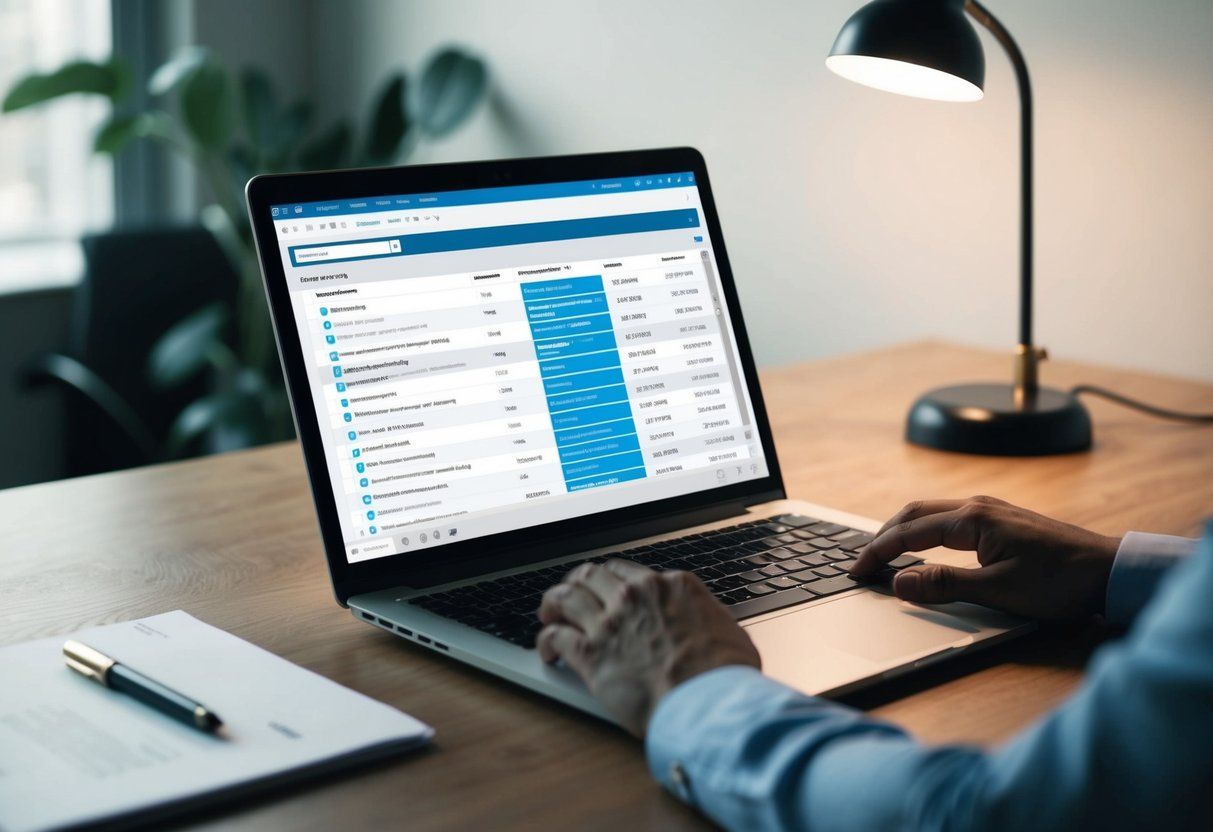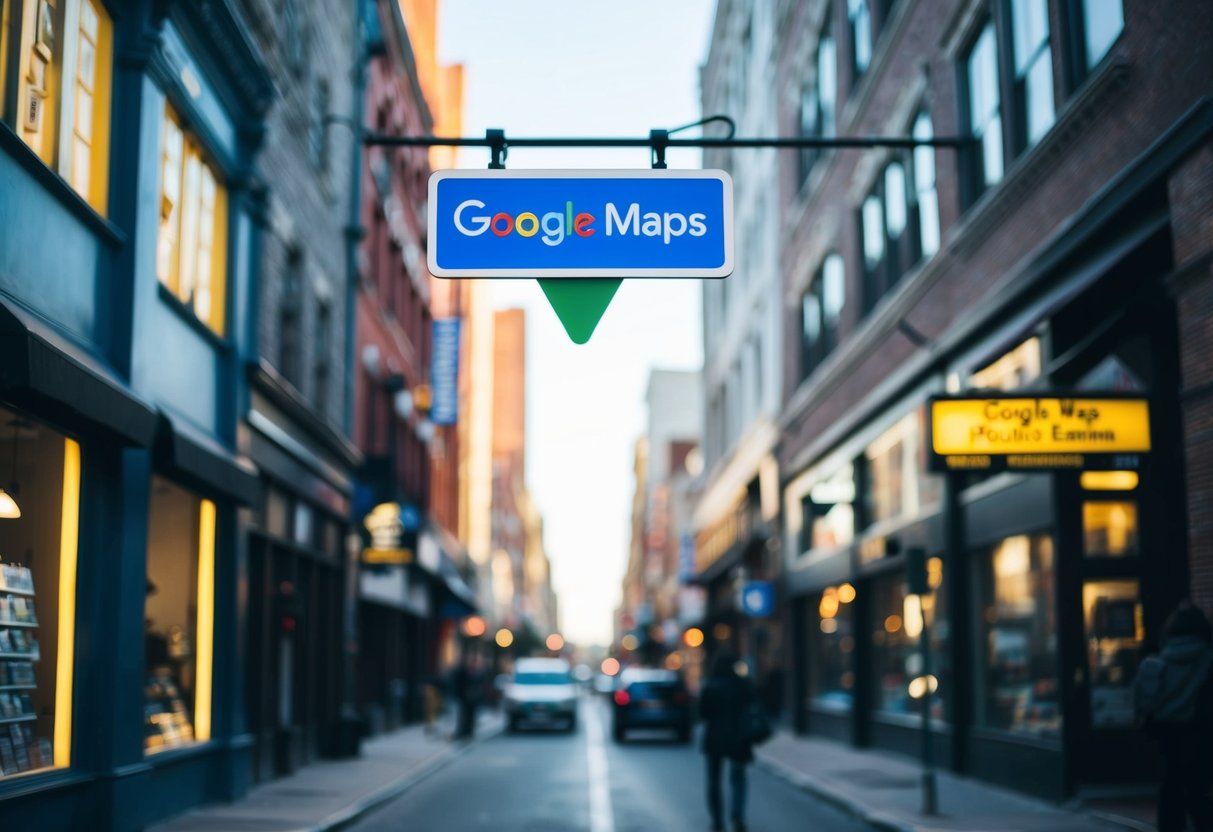New York City Lead Generation Los Angeles, CA Lead Generation Chicago, IL Lead Generation Houston, TX Lead Generation Phoenix, AZ Lead Generation Philadelphia, PA Lead Generation San Antonio, TX Lead Generation San Diego, CA Lead Generation Dallas, TX Lead Generation San Jose, CA Lead Generation Austin, TX Lead Generation Jacksonville, FL Lead Generation Fort Worth, TX Lead Generation Columbus, OH Lead Generation Indianapolis, IN Lead Generation Charlotte, NC Lead Generation San Francisco, CA Lead Generation Louisville, KY Lead Generation Seattle, WA Lead Generation Nashville, TN Lead Generation Denver, CO Lead Generation Washington, DC Lead Generation Oklahoma City, OK Lead Generation El Paso, TX Lead Generation Boston, MA Lead Generation Portland, OR Lead Generation Las Vegas, NV Lead Generation Detroit, MI Lead Generation Memphis, TN Lead Generation Baltimore, MD Lead Generation Milwaukee, WI Lead Generation Albuquerque, NM Lead Generation Tucson, AZ Lead Generation Fresno, CA Lead Generation Sacramento, CA Lead Generation Kansas City, MO Lead Generation Mesa, AZ Lead Generation Atlanta, GA Lead Generation Omaha, NE Lead Generation Colorado Springs, CO Lead Generation Raleigh, NC Lead Generation Long Beach, CA Lead Generation Virginia Beach, VA Lead Generation Miami, FL Lead Generation Oakland, CA Lead Generation Minneapolis, MN Lead Generation Tulsa, OK Lead Generation Bakersfield, CA Lead Generation Wichita, KS Lead Generation San Antonio, TX Lead Generation Las Vegas, NV Lead Generation Louisville, KY Lead Generation Milwaukee, WI Lead Generation Albuquerque, NM Lead Generation Tucson, AZ Lead Generation Fresno, CA Lead Generation Sacramento, CA Lead Generation Kansas City, MO Lead Generation Mesa, AZ Lead Generation Omaha, NE Lead Generation Colorado Springs, CO Lead Generation Long Beach, CA Lead Generation Virginia Beach, VA Lead Generation Oakland, CA Lead Generation Tulsa, OK Lead Generation Bakersfield, CA Lead Generation Wichita, KS Lead Generation Arlington, TX Lead Generation Tampa, FL Lead Generation Anaheim, CA Lead Generation Aurora, CO Lead Generation Santa Ana, CA Lead Generation Riverside, CA Lead Generation Corpus Christi, TX Lead Generation Lexington, KY Lead Generation Pittsburgh, PA Lead Generation Anchorage, AK Lead Generation Stockton, CA Lead Generation Cincinnati, OH Lead Generation St. Paul, MN Lead Generation Toledo, OH Lead Generation Newark, NJ Lead Generation Plano, TX Lead Generation Henderson, NV Lead Generation Lincoln, NE Lead Generation Orlando, FL Lead Generation Jersey City, NJ Lead Generation Chula Vista, CA Lead Generation Fort Wayne, IN Lead Generation St. Petersburg, FL Lead Generation Chandler, AZ Lead Generation Laredo, TX Lead Generation Norfolk, VA Lead Generation Durham, NC Lead Generation Madison, WI Lead Generation Lubbock, TX Lead Generation Irvine, CA Lead Generation Winston-Salem, NC Lead Generation Glendale, AZ Lead Generation New York City Dentist Marketing Los Angeles, CA Dentist Marketing Chicago, IL Dentist Marketing Houston, TX Dentist Marketing Phoenix, AZ Dentist Marketing Philadelphia, PA Dentist Marketing San Antonio, TX Dentist Marketing San Diego, CA Dentist Marketing Dallas, TX Dentist Marketing San Jose, CA Dentist Marketing Austin, TX Dentist Marketing Jacksonville, FL Dentist Marketing Fort Worth, TX Dentist Marketing Columbus, OH Dentist Marketing Indianapolis, IN Dentist Marketing Charlotte, NC Dentist Marketing San Francisco, CA Dentist Marketing Louisville, KY Dentist Marketing Seattle, WA Dentist Marketing Nashville, TN Dentist Marketing Denver, CO Dentist Marketing Washington, Dentist Marketing Oklahoma City, OK Dentist Marketing El Paso, TX Dentist Marketing Boston, MA Dentist Marketing Portland, OR Dentist Marketing Las Vegas, NV Dentist Marketing Detroit, MI Dentist Marketing Memphis, TN Dentist Marketing Baltimore, MD Dentist Marketing Milwaukee, WI Dentist Marketing Albuquerque, NM Dentist Marketing Tucson, AZ Dentist Marketing Fresno, CA Dentist Marketing Sacramento, CA Dentist Marketing Kansas City, MO Dentist Marketing Mesa, AZ Dentist Marketing Atlanta, GA Dentist Marketing Omaha, NE Dentist Marketing Colorado Springs, CO Dentist Marketing Raleigh, NC Dentist Marketing Long Beach, CA Dentist Marketing Virginia Beach, VA Dentist Marketing Miami, FL Dentist Marketing Oakland, CA Dentist Marketing Minneapolis, MN Dentist Marketing Tulsa, OK Dentist Marketing Bakersfield, CA Dentist Marketing Wichita, KS Dentist Marketing Arlington, VA Dentist Marketing LeadLane Terms Service in Sunland, CA LeadLane Design Services in Sunland, CA Logo Design in Sunland, CA Business Card Design in Sunland, CA Brand Guide Services in Sunland, CA Stationery Design in Sunland, CA New York City, NY Print Shop Lead Generation Los Angeles, CA Print Shop Lead Generation Chicago, IL Print Shop Lead Generation Houston, TX Print Shop Lead Generation Phoenix, AZ Print Shop Lead Generation Philadelphia, PA Print Shop Lead Generation San Antonio, TX Print Shop Lead Generation San Diego, CA Print Shop Lead Generation Dallas, TX Print Shop Lead Generation San Jose, CA Print Shop Lead Generation Austin, TX Print Shop Lead Generation Jacksonville, FL Print Shop Lead Generation Fort Worth, TX Print Shop Lead Generation Columbus, OH Print Shop Lead Generation Indianapolis, IN Print Shop Lead Generation Charlotte, NC Print Shop Lead Generation San Francisco, CA Print Shop Lead Generation Louisville, KY Print Shop Lead Generation Seattle, WA Print Shop Lead Generation Nashville, TN Print Shop Lead Generation Denver, CO Print Shop Lead Generation Washington, Print Shop Lead Generation Oklahoma City, OK Print Shop Lead Generation El Paso, TX Print Shop Lead Generation Boston, MA Print Shop Lead Generation Portland, OR Print Shop Lead Generation Las Vegas, NV Print Shop Lead Generation Detroit, MI Print Shop Lead Generation Memphis, TN Print Shop Lead Generation Baltimore, MD Print Shop Lead Generation Milwaukee, WI Print Shop Lead Generation Albuquerque, NM Print Shop Lead Generation Tucson, AZ Print Shop Lead Generation Fresno, CA Print Shop Lead Generation Sacramento, CA Print Shop Lead Generation Kansas City, MO Print Shop Lead Generation Mesa, AZ Print Shop Lead Generation Atlanta, GA Print Shop Lead Generation Omaha, NE Print Shop Lead Generation Colorado Springs, CO Print Shop Lead Generation Raleigh, NC Print Shop Lead Generation Long Beach, CA Print Shop Lead Generation Virginia Beach, VA Print Shop Lead Generation Miami, FL Print Shop Lead Generation Oakland, CA Print Shop Lead Generation Minneapolis, MN Print Shop Lead Generation Tulsa, OK Print Shop Lead Generation Bakersfield, CA Print Shop Lead Generation Wichita, KS Print Shop Lead Generation San Antonio, TX Print Shop Lead Generation Las Vegas, NV Print Shop Lead Generation Louisville, KY Print Shop Lead Generation Milwaukee, WI Print Shop Lead Generation Albuquerque, NM Print Shop Lead Generation Tucson, AZ Print Shop Lead Generation Fresno, CA Print Shop Lead Generation Sacramento, CA Print Shop Lead Generation Kansas City, MO Print Shop Lead Generation Mesa, AZ Print Shop Lead Generation Omaha, NE Print Shop Lead Generation Colorado Springs, CO Print Shop Lead Generation Long Beach, CA Print Shop Lead Generation Virginia Beach, VA Print Shop Lead Generation Oakland, CA Print Shop Lead Generation Tulsa, OK Print Shop Lead Generation Bakersfield, CA Print Shop Lead Generation Wichita, KS Print Shop Lead Generation Arlington, TX Print Shop Lead Generation Tampa, FL Print Shop Lead Generation Anaheim, CA Print Shop Lead Generation Aurora, CO Print Shop Lead Generation Santa Ana, CA Print Shop Lead Generation Riverside, CA Print Shop Lead Generation Corpus Christi, TX Print Shop Lead Generation Lexington, KY Print Shop Lead Generation Pittsburgh, PA Print Shop Lead Generation Anchorage, AK Print Shop Lead Generation Stockton, CA Print Shop Lead Generation Cincinnati, OH Print Shop Lead Generation St. Paul, MN Print Shop Lead Generation Toledo, OH Print Shop Lead Generation Newark, NJ Print Shop Lead Generation Plano, TX Print Shop Lead Generation Henderson, NV Print Shop Lead Generation Lincoln, NE Print Shop Lead Generation Orlando, FL Print Shop Lead Generation Jersey City, NJ Print Shop Lead Generation Chula Vista, CA Print Shop Lead Generation Fort Wayne, IN Print Shop Lead Generation St. Petersburg, FL Print Shop Lead Generation Chandler, AZ Print Shop Lead Generation Laredo, TX Print Shop Lead Generation Norfolk, VA Print Shop Lead Generation Durham, NC Print Shop Lead Generation Madison, WI Print Shop Lead Generation Lubbock, TX Print Shop Lead Generation Irvine, CA Print Shop Lead Generation Winston-Salem, NC Print Shop Lead Generation Glendale, AZ Print Shop Lead Generation New York City, NY Sign Company Lead Generation Los Angeles, CA Sign Company Lead Generation Chicago, IL Sign Company Lead Generation Houston, TX Sign Company Lead Generation Phoenix, AZ Sign Company Lead Generation Philadelphia, PA Sign Company Lead Generation San Antonio, TX Sign Company Lead Generation San Diego, CA Sign Company Lead Generation Dallas, TX Sign Company Lead Generation San Jose, CA Sign Company Lead Generation Austin, TX Sign Company Lead Generation Jacksonville, FL Sign Company Lead Generation Fort Worth, TX Sign Company Lead Generation Columbus, OH Sign Company Lead Generation Indianapolis, IN Sign Company Lead Generation Charlotte, NC Sign Company Lead Generation San Francisco, CA Sign Company Lead Generation Louisville, KY Sign Company Lead Generation Seattle, WA Sign Company Lead Generation Nashville, TN Sign Company Lead Generation Denver, CO Sign Company Lead Generation Washington, DC Sign Company Lead Generation Oklahoma City, OK Sign Company Lead Generation El Paso, TX Sign Company Lead Generation Boston, MA Sign Company Lead Generation Portland, OR Sign Company Lead Generation Las Vegas, NV Sign Company Lead Generation Detroit, MI Sign Company Lead Generation Memphis, TN Sign Company Lead Generation Baltimore, MD Sign Company Lead Generation Milwaukee, WI Sign Company Lead Generation Albuquerque, NM Sign Company Lead Generation Tucson, AZ Sign Company Lead Generation Fresno, CA Sign Company Lead Generation Sacramento, CA Sign Company Lead Generation Kansas City, MO Sign Company Lead Generation Mesa, AZ Sign Company Lead Generation Atlanta, GA Sign Company Lead Generation Omaha, NE Sign Company Lead Generation Colorado Springs, CO Sign Company Lead Generation Raleigh, NC Sign Company Lead Generation Long Beach, CA Sign Company Lead Generation Virginia Beach, VA Sign Company Lead Generation Miami, FL Sign Company Lead Generation Oakland, CA Sign Company Lead Generation Minneapolis, MN Sign Company Lead Generation Tulsa, OK Sign Company Lead Generation Bakersfield, CA Sign Company Lead Generation Wichita, KS Sign Company Lead Generation San Antonio, TX Sign Company Lead Generation Las Vegas, NV Sign Company Lead Generation Louisville, KY Sign Company Lead Generation Milwaukee, WI Sign Company Lead Generation Albuquerque, NM Sign Company Lead Generation Tucson, AZ Sign Company Lead Generation Fresno, CA Sign Company Lead Generation Sacramento, CA Sign Company Lead Generation Kansas City, MO Sign Company Lead Generation Mesa, AZ Sign Company Lead Generation Omaha, NE Sign Company Lead Generation Colorado Springs, CO Sign Company Lead Generation Long Beach, CA Sign Company Lead Generation Virginia Beach, VA Sign Company Lead Generation Oakland, CA Sign Company Lead Generation Tulsa, OK Sign Company Lead Generation Bakersfield, CA Sign Company Lead Generation Wichita, KS Sign Company Lead Generation Arlington, TX Sign Company Lead Generation Tampa, FL Sign Company Lead Generation Anaheim, CA Sign Company Lead Generation Aurora, CO Sign Company Lead Generation Santa Ana, CA Sign Company Lead Generation Riverside, CA Sign Company Lead Generation Corpus Christi, TX Sign Company Lead Generation Lexington, KY Sign Company Lead Generation Pittsburgh, PA Sign Company Lead Generation Anchorage, AK Sign Company Lead Generation Stockton, CA Sign Company Lead Generation Cincinnati, OH Sign Company Lead Generation St. Paul, MN Sign Company Lead Generation Toledo, OH Sign Company Lead Generation Newark, NJ Sign Company Lead Generation Plano, TX Sign Company Lead Generation Henderson, NV Sign Company Lead Generation Lincoln, NE Sign Company Lead Generation Orlando, FL Sign Company Lead Generation Jersey City, NJ Sign Company Lead Generation Chula Vista, CA Sign Company Lead Generation Fort Wayne, IN Sign Company Lead Generation St. Petersburg, FL Sign Company Lead Generation Chandler, AZ Sign Company Lead Generation Laredo, TX Sign Company Lead Generation Norfolk, VA Sign Company Lead Generation Durham, NC Sign Company Lead Generation Madison, WI Sign Company Lead Generation Lubbock, TX Sign Company Lead Generation Irvine, CA Sign Company Lead Generation Winston-Salem, NC Sign Company Lead Generation Glendale, AZ Sign Company Lead Generation New York City Home Service Lead Generation Los Angeles, CA Home Service Lead Generation Chicago, IL Home Service Lead Generation Houston, TX Home Service Lead Generation Phoenix, AZ Home Service Lead Generation Philadelphia, PA Home Service Lead Generation San Antonio, TX Home Service Lead Generation San Diego, CA Home Service Lead Generation Dallas Home Service Lead Generation San Jose, CA Home Service Lead Generation Austin, TX Home Service Lead Generation Jacksonville, FL Home Service Lead Generation Fort Worth, TX Home Service Lead Generation Columbus Home Service Lead Generation Indianapolis, IN Home Service Lead Generation Charlotte, NC Home Service Lead Generation San Francisco, CA Home Service Lead Generation Louisville, KY Home Service Lead Generation Seattle, WA Home Service Lead Generation Nashville Home Service Lead Generation Denver Home Service Lead Generation Washington, Home Service Lead Generation Oklahoma City Home Service Lead Generation El Paso, TX Home Service Lead Generation Boston Home Service Lead Generation Portland, OR Home Service Lead Generation Las Vegas, NV Home Service Lead Generation Detroit, MI Home Service Lead Generation Memphis, TN Home Service Lead Generation Baltimore, MD Home Service Lead Generation Milwaukee, WI Home Service Lead Generation Albuquerque, NM Home Service Lead Generation Tucson, AZ Home Service Lead Generation Fresno, CA Home Service Lead Generation Sacramento, CA Home Service Lead Generation Kansas City Home Service Lead Generation Mesa, AZ Home Service Lead Generation Atlanta, GA Home Service Lead Generation Omaha Home Service Lead Generation Colorado Springs, CO Home Service Lead Generation Raleigh, NC Home Service Lead Generation Long Beach, CA Home Service Lead Generation Virginia Beach, VA Home Service Lead Generation Miami, FL Home Service Lead Generation Oakland, CA Home Service Lead Generation Minneapolis, MN Home Service Lead Generation Tulsa, OK Home Service Lead Generation Bakersfield, CA Home Service Lead Generation Wichita, KS Home Service Lead Generation San Antonio, TX Home Service Lead Generation Las Vegas, NV Home Service Lead Generation Louisville, KY Home Service Lead Generation Milwaukee, WI Home Service Lead Generation Albuquerque, NM Home Service Lead Generation Tucson, AZ Home Service Lead Generation Fresno, CA Home Service Lead Generation Sacramento, CA Home Service Lead Generation Kansas City, MO Home Service Lead Generation Mesa, AZ Home Service Lead Generation Omaha, NE Home Service Lead Generation Colorado Springs, CO Home Service Lead Generation Long Beach, CA Home Service Lead Generation Virginia Beach, VA Home Service Lead Generation Oakland, CA Home Service Lead Generation Tulsa, OK Home Service Lead Generation Bakersfield, CA Home Service Lead Generation Wichita, KS Home Service Lead Generation Arlington, TX Home Service Lead Generation Tampa, FL Home Service Lead Generation Anaheim, CA Home Service Lead Generation Aurora, CO Home Service Lead Generation Santa Ana, CA Home Service Lead Generation Riverside, CA Home Service Lead Generation Corpus Christi, TX Home Service Lead Generation Lexington, KY Home Service Lead Generation Pittsburgh, PA Home Service Lead Generation Anchorage, AK Home Service Lead Generation Stockton, CA Home Service Lead Generation Cincinnati, OH Home Service Lead Generation St. Paul, MN Home Service Lead Generation Toledo, OH Home Service Lead Generation Newark, NJ Home Service Lead Generation Plano, TX Home Service Lead Generation Henderson, NV Home Service Lead Generation Lincoln, NE Home Service Lead Generation Orlando, FL Home Service Lead Generation Jersey City, NJ Home Service Lead Generation Chula Vista, CA Home Service Lead Generation Fort Wayne, IN Home Service Lead Generation St. Petersburg, FL Home Service Lead Generation Chandler, AZ Home Service Lead Generation Laredo, TX Home Service Lead Generation Norfolk, VA Home Service Lead Generation Durham, NC Home Service Lead Generation Madison, WI Home Service Lead Generation Lubbock, TX Home Service Lead Generation Irvine, CA Home Service Lead Generation Winston-Salem, NC Home Service Lead Generation Glendale, AZ Home Service Lead Generation New York City, Roofing Company Lead Generation Los Angeles, CA Roofing Company Lead Generation Chicago Roofing Company Lead Generation Houston, TX Roofing Company Lead Generation Phoenix, AZ Roofing Company Lead Generation Philadelphia, PA Roofing Company Lead Generation San Antonio, TX Roofing Company Lead Generation San Diego, CA Roofing Company Lead Generation Dallas, TX Roofing Company Lead Generation San Jose, CA Roofing Company Lead Generation Austin, TX Roofing Company Lead Generation Jacksonville, FL Roofing Company Lead Generation Fort Worth, TX Roofing Company Lead Generation Columbus Roofing Company Lead Generation Indianapolis, IN Roofing Company Lead Generation Charlotte, NC Roofing Company Lead Generation San Francisco, CA Roofing Company Lead Generation Louisville, KY Roofing Company Lead Generation Seattle, WA Roofing Company Lead Generation Nashville Roofing Company Lead Generation Denver, CO Roofing Company Lead Generation Washington Roofing Company Lead Generation Oklahoma City, OK Roofing Company Lead Generation El Paso, TX Roofing Company Lead Generation Boston, MA Roofing Company Lead Generation Portland, OR Roofing Company Lead Generation Las Vegas, NV Roofing Company Lead Generation Detroit, MI Roofing Company Lead Generation Memphis, TN Roofing Company Lead Generation Baltimore, MD Roofing Company Lead Generation Milwaukee, WI Roofing Company Lead Generation Albuquerque, NM Roofing Company Lead Generation Tucson, AZ Roofing Company Lead Generation Fresno, CA Roofing Company Lead Generation Sacramento, CA Roofing Company Lead Generation Kansas City, MO Roofing Company Lead Generation Mesa, AZ Roofing Company Lead Generation Atlanta Roofing Company Lead Generation Omaha, NE Roofing Company Lead Generation Colorado Springs, CO Roofing Company Lead Generation Raleigh, NC Roofing Company Lead Generation Long Beach, CA Roofing Company Lead Generation Virginia Beach, VA Roofing Company Lead Generation Miami, FL Roofing Company Lead Generation Oakland, CA Roofing Company Lead Generation Minneapolis, MN Roofing Company Lead Generation Tulsa, OK Roofing Company Lead Generation Bakersfield, CA Roofing Company Lead Generation Wichita, KS Roofing Company Lead Generation San Antonio, TX Roofing Company Lead Generation Las Vegas, NV Roofing Company Lead Generation Louisville, KY Roofing Company Lead Generation Milwaukee, WI Roofing Company Lead Generation Albuquerque, NM Roofing Company Lead Generation Tucson, AZ Roofing Company Lead Generation Fresno, CA Roofing Company Lead Generation Sacramento, CA Roofing Company Lead Generation Kansas City, MO Roofing Company Lead Generation Mesa, AZ Roofing Company Lead Generation Omaha, NE Roofing Company Lead Generation Colorado Springs, CO Roofing Company Lead Generation Long Beach, CA Roofing Company Lead Generation Virginia Beach, VA Roofing Company Lead Generation Oakland, CA Roofing Company Lead Generation Tulsa, OK Roofing Company Lead Generation Bakersfield, CA Roofing Company Lead Generation Wichita, KS Roofing Company Lead Generation Arlington, TX Roofing Company Lead Generation Tampa, FL Roofing Company Lead Generation Anaheim, CA Roofing Company Lead Generation Aurora, CO Roofing Company Lead Generation Santa Ana, CA Roofing Company Lead Generation Riverside, CA Roofing Company Lead Generation Corpus Christi, TX Roofing Company Lead Generation Lexington, KY Roofing Company Lead Generation Pittsburgh, PA Roofing Company Lead Generation Anchorage, AK Roofing Company Lead Generation Stockton, CA Roofing Company Lead Generation Cincinnati, OH Roofing Company Lead Generation St. Paul, MN Roofing Company Lead Generation Toledo, OH Roofing Company Lead Generation Newark, NJ Roofing Company Lead Generation Plano, TX Roofing Company Lead Generation Henderson, NV Roofing Company Lead Generation Lincoln, NE Roofing Company Lead Generation Orlando, FL Roofing Company Lead Generation Jersey City, NJ Roofing Company Lead Generation Chula Vista, CA Roofing Company Lead Generation Fort Wayne, IN Roofing Company Lead Generation St. Petersburg, FL Roofing Company Lead Generation Chandler, AZ Roofing Company Lead Generation Laredo, TX Roofing Company Lead Generation Norfolk, VA Roofing Company Lead Generation Durham, NC Roofing Company Lead Generation Madison, WI Roofing Company Lead Generation Lubbock, TX Roofing Company Lead Generation Irvine, CA Roofing Company Lead Generation Winston-Salem, NC Roofing Company Lead Generation Glendale, AZ Roofing Company Lead Generation New York City, NY Home Inspection Leads Los Angeles, CA Home Inspection Leads Chicago, IL Home Inspection Leads Houston, TX Home Inspection Leads Phoenix, AZ Home Inspection Leads Philadelphia, PA Home Inspection Leads San Antonio, TX Home Inspection Leads San Diego, CA Home Inspection Leads Dallas, TX Home Inspection Leads San Jose, CA Home Inspection Leads Austin, TX Home Inspection Leads Jacksonville, FL Home Inspection Leads Fort Worth, TX Home Inspection Leads Columbus, OH Home Inspection Leads Indianapolis, IN Home Inspection Leads Charlotte, NC Home Inspection Leads San Francisco, CA Home Inspection Leads Louisville, KY Home Inspection Leads Seattle, WA Home Inspection Leads Nashville, TN Home Inspection Leads Denver, CO Home Inspection Leads Washington, Home Inspection Leads Oklahoma City, OK Home Inspection Leads El Paso, TX Home Inspection Leads Boston Home Inspection Leads Portland, OR Home Inspection Leads Las Vegas, NV Home Inspection Leads Detroit, MI Home Inspection Leads Memphis, TN Home Inspection Leads Baltimore, MD Home Inspection Leads Milwaukee, WI Home Inspection Leads Albuquerque, NM Home Inspection Leads Tucson, AZ Home Inspection Leads Fresno, CA Home Inspection Leads Sacramento, CA Home Inspection Leads Kansas City, MO Home Inspection Leads Mesa, AZ Home Inspection Leads Atlanta, GA Home Inspection Leads Omaha, NE Home Inspection Leads Colorado Springs, CO Home Inspection Leads Raleigh, NC Home Inspection Leads Long Beach, CA Home Inspection Leads Virginia Beach, VA Home Inspection Leads Miami, FL Home Inspection Leads Oakland, CA Home Inspection Leads Minneapolis, MN Home Inspection Leads Tulsa, OK Home Inspection Leads Bakersfield, CA Home Inspection Leads Wichita, KS Home Inspection Leads San Antonio, TX Home Inspection Leads Las Vegas, NV Home Inspection Leads Louisville, KY Home Inspection Leads Milwaukee, WI Home Inspection Leads Albuquerque, NM Home Inspection Leads Tucson, AZ Home Inspection Leads Fresno, CA Home Inspection Leads Sacramento, CA Home Inspection Leads Kansas City, MO Home Inspection Leads Mesa, AZ Home Inspection Leads Omaha, NE Home Inspection Leads Colorado Springs, CO Home Inspection Leads Long Beach, CA Home Inspection Leads Virginia Beach, VA Home Inspection Leads Oakland, CA Home Inspection Leads Tulsa, OK Home Inspection Leads Bakersfield, CA Home Inspection Leads Wichita, KS Home Inspection Leads Arlington, TX Home Inspection Leads Tampa, FL Home Inspection Leads Anaheim, CA Home Inspection Leads Aurora, CO Home Inspection Leads Santa Ana, CA Home Inspection Leads Riverside, CA Home Inspection Leads Corpus Christi, TX Home Inspection Leads Lexington, KY Home Inspection Leads Pittsburgh, PA Home Inspection Leads Anchorage, AK Home Inspection Leads Stockton, CA Home Inspection Leads Cincinnati, OH Home Inspection Leads St. Paul, MN Home Inspection Leads Toledo, OH Home Inspection Leads Newark, NJ Home Inspection Leads Plano, TX Home Inspection Leads Henderson, NV Home Inspection Leads Lincoln, NE Home Inspection Leads Orlando, FL Home Inspection Leads Jersey City, NJ Home Inspection Leads Chula Vista, CA Home Inspection Leads Fort Wayne, IN Home Inspection Leads St. Petersburg, FL Home Inspection Leads Chandler, AZ Home Inspection Leads Laredo, TX Home Inspection Leads Norfolk, VA Home Inspection Leads Durham, NC Home Inspection Leads Madison, WI Home Inspection Leads Lubbock, TX Home Inspection Leads Irvine, CA Home Inspection Leads Winston-Salem, NC Home Inspection Leads Glendale, AZ Home Inspection Leads New York City, NY Printing Leads Los Angeles, CA Printing Leads Chicago, IL Printing Leads Houston, TX Printing Leads Phoenix, AZ Printing Leads Philadelphia, PA Printing Leads San Antonio, TX Printing Leads San Diego, CA Printing Leads Dallas, TX Printing Leads San Jose, CA Printing Leads Austin, TX Printing Leads Jacksonville, FL Printing Leads Fort Worth, TX Printing Leads Columbus, OH Printing Leads Indianapolis, IN Printing Leads Charlotte, NC Printing Leads San Francisco, CA Printing Leads Louisville, KY Printing Leads Seattle, WA Printing Leads Nashville, TN Printing Leads Denver, CO Printing Leads Washington, DC Printing Leads Oklahoma City, OK Printing Leads El Paso, TX Printing Leads Boston, MA Printing Leads Portland, OR Printing Leads Las Vegas, NV Printing Leads Detroit, MI Printing Leads Memphis, TN Printing Leads Baltimore, MD Printing Leads Milwaukee, WI Printing Leads Albuquerque, NM Printing Leads Tucson, AZ Printing Leads Fresno, CA Printing Leads Sacramento, CA Printing Leads Kansas City, MO Printing Leads Mesa, AZ Printing Leads Atlanta, GA Printing Leads Omaha, NE Printing Leads Colorado Springs, CO Printing Leads Raleigh, NC Printing Leads Long Beach, CA Printing Leads Virginia Beach, VA Printing Leads Miami Printing Leads Oakland, CA Printing Leads Minneapolis, MN Printing Leads Tulsa, OK Printing Leads Bakersfield, CA Printing Leads Wichita, KS Printing Leads San Antonio, TX Printing Leads Las Vegas, NV Printing Leads Louisville, KY Printing Leads Milwaukee, WI Printing Leads Albuquerque, NM Printing Leads Tucson, AZ Printing Leads Fresno, CA Printing Leads Sacramento, CA Printing Leads Kansas City, MO Printing Leads Mesa, AZ Printing Leads Omaha, NE Printing Leads Colorado Springs, CO Printing Leads Long Beach, CA Printing Leads Virginia Beach, VA Printing Leads Oakland, CA Printing Leads Tulsa, OK Printing Leads Bakersfield, CA Printing Leads Wichita, KS Printing Leads Arlington, TX Printing Leads Tampa, FL Printing Leads Anaheim, CA Printing Leads Aurora, CO Printing Leads Santa Ana, CA Printing Leads Riverside, CA Printing Leads Corpus Christi, TX Printing Leads Lexington, KY Printing Leads Pittsburgh, PA Printing Leads Anchorage, AK Printing Leads Stockton, CA Printing Leads Cincinnati, OH Printing Leads St. Paul, MN Printing Leads Toledo, OH Printing Leads Newark, NJ Printing Leads Plano, TX Printing Leads Henderson, NV Printing Leads Lincoln, NE Printing Leads Orlando, FL Printing Leads Jersey City, NJ Printing Leads Chula Vista, CA Printing Leads Fort Wayne, IN Printing Leads St. Petersburg, FL Printing Leads Chandler, AZ Printing Leads Laredo, TX Printing Leads Norfolk, VA Printing Leads Durham, NC Printing Leads Madison, WI Printing Leads Lubbock, TX Printing Leads Irvine, CA Printing Leads Winston-Salem, NC Printing Leads Glendale, AZ Printing Leads New York City, Online Marketing for Printing Companies Los Angeles, CA Online Marketing for Printing Companies Chicago, IL Online Marketing for Printing Companies Houston, TX Online Marketing for Printing Companies Phoenix, AZ Online Marketing for Printing Companies Philadelphia, PA Online Marketing for Printing Companies San Antonio, TX Online Marketing for Printing Companies San Diego, CA Online Marketing for Printing Companies Dallas, TX Online Marketing for Printing Companies San Jose, CA Online Marketing for Printing Companies Austin, TX Online Marketing for Printing Companies Jacksonville, FL Online Marketing for Printing Companies Fort Worth, TX Online Marketing for Printing Companies Columbus, OH Online Marketing for Printing Companies Indianapolis, IN Online Marketing for Printing Companies Charlotte, NC Online Marketing for Printing Companies San Francisco, CA Online Marketing for Printing Companies Louisville, KY Online Marketing for Printing Companies Seattle, WA Online Marketing for Printing Companies Nashville, TN Online Marketing for Printing Companies Denver, CO Online Marketing for Printing Companies Washington, Online Marketing for Printing Companies Oklahoma City, OK Online Marketing for Printing Companies El Paso, TX Online Marketing for Printing Companies Boston Online Marketing for Printing Companies Portland, OR Online Marketing for Printing Companies Las Vegas, NV Online Marketing for Printing Companies Detroit, MI Online Marketing for Printing Companies Memphis, TN Online Marketing for Printing Companies Baltimore, MD Online Marketing for Printing Companies Milwaukee, WI Online Marketing for Printing Companies Albuquerque Online Marketing for Printing Companies Tucson, AZ Online Marketing for Printing Companies Fresno, CA Online Marketing for Printing Companies Sacramento, CA Online Marketing for Printing Companies Kansas City, Online Marketing for Printing Companies Mesa, AZ Online Marketing for Printing Companies Atlanta, GA Online Marketing for Printing Companies Omaha, NE Online Marketing for Printing Companies Colorado Springs, CO Online Marketing for Printing Companies Raleigh, NC Online Marketing for Printing Companies Long Beach, CA Online Marketing for Printing Companies Virginia Beach, VA Online Marketing for Printing Companies Miami, FL Online Marketing for Printing Companies Oakland, CA Online Marketing for Printing Companies Minneapolis, MN Online Marketing for Printing Companies Tulsa, OK Online Marketing for Printing Companies Bakersfield, CA Online Marketing for Printing Companies Wichita, KS Online Marketing for Printing Companies San Antonio, TX Online Marketing for Printing Companies Las Vegas, NV Online Marketing for Printing Companies Louisville, KY Online Marketing for Printing Companies Milwaukee, WI Online Marketing for Printing Companies Albuquerque, NM Online Marketing for Printing Companies Tucson, AZ Online Marketing for Printing Companies Fresno, CA Online Marketing for Printing Companies Sacramento, CA Online Marketing for Printing Companies Kansas City, MO Online Marketing for Printing Companies Mesa, AZ Online Marketing for Printing Companies Omaha, NE Online Marketing for Printing Companies Colorado Springs, CO Online Marketing for Printing Companies Long Beach, CA Online Marketing for Printing Companies Virginia Beach, VA Online Marketing for Printing Companies Oakland, CA Online Marketing for Printing Companies Tulsa, OK Online Marketing for Printing Companies Bakersfield, CA Online Marketing for Printing Companies Wichita, KS Online Marketing for Printing Companies Arlington, TX Online Marketing for Printing Companies Tampa, FL Online Marketing for Printing Companies Anaheim, CA Online Marketing for Printing Companies Aurora, CO Online Marketing for Printing Companies Santa Ana, CA Online Marketing for Printing Companies Riverside, CA Online Marketing for Printing Companies Corpus Christi, TX Online Marketing for Printing Companies Lexington, KY Online Marketing for Printing Companies Pittsburgh, PA Online Marketing for Printing Companies Anchorage, AK Online Marketing for Printing Companies Stockton, CA Online Marketing for Printing Companies Cincinnati, OH Online Marketing for Printing Companies St. Paul, MN Online Marketing for Printing Companies Toledo, OH Online Marketing for Printing Companies Newark, NJ Online Marketing for Printing Companies Plano, TX Online Marketing for Printing Companies Henderson, NV Online Marketing for Printing Companies Lincoln, NE Online Marketing for Printing Companies Orlando, FL Online Marketing for Printing Companies Jersey City, NJ Online Marketing for Printing Companies Chula Vista, CA Online Marketing for Printing Companies Fort Wayne, IN Online Marketing for Printing Companies St. Petersburg, FL Online Marketing for Printing Companies Chandler, AZ Online Marketing for Printing Companies Laredo, TX Online Marketing for Printing Companies Norfolk, VA Online Marketing for Printing Companies Durham, NC Online Marketing for Printing Companies Madison, WI Online Marketing for Printing Companies Lubbock, TX Online Marketing for Printing Companies Irvine, CA Online Marketing for Printing Companies Winston-Salem, NC Online Marketing for Printing Companies Glendale, AZ Online Marketing for Printing Companies Buffalo, NY Online Marketing for Printing Companies St. Louis, MO Online Marketing for Printing Companies Birmingham, AL Online Marketing for Printing Companies Baton Rouge, LA Online Marketing for Printing Companies Rochester, NY Online Marketing for Printing Companies Spokane, WA Online Marketing for Printing Companies Des Moines, IA Online Marketing for Printing Companies Grand Rapids, MI Online Marketing for Printing Companies Richmond, VA Online Marketing for Printing Companies Boise, ID Online Marketing for Printing Companies Fayetteville, NC Online Marketing for Printing Companies Mobile, AL Online Marketing for Printing Companies Salt Lake City, UT Online Marketing for Printing Companies Huntsville, AL Online Marketing for Printing Companies Knoxville, TN Online Marketing for Printing Companies Little Rock, AR Online Marketing for Printing Companies Chattanooga, TN Online Marketing for Printing Companies Newport News, VA Online Marketing for Printing Companies Providence, RI Online Marketing for Printing Companies Jackson, MS Online Marketing for Printing Companies Worcester, MA Online Marketing for Printing Companies Tempe, AZ Online Marketing for Printing Companies Cape Coral, FL Online Marketing for Printing Companies Springfield, MO Online Marketing for Printing Companies Lancaster, CA Online Marketing for Printing Companies Eugene, OR Online Marketing for Printing Companies Pembroke Pines, FL Online Marketing for Printing Companies Peoria, AZ Online Marketing for Printing Companies Sioux Falls, SD Online Marketing for Printing Companies Springfield, MA Online Marketing for Printing Companies Fort Collins, CO Online Marketing for Printing Companies Glendale, CA Online Marketing for Printing Companies Savannah, GA Online Marketing for Printing Companies Oceanside, CA Online Marketing for Printing Companies Frisco, TX Online Marketing for Printing Companies Pasadena, TX Online Marketing for Printing Companies Syracuse, NY Online Marketing for Printing Companies Tallahassee, FL Online Marketing for Printing Companies Overland Park, KS Online Marketing for Printing Companies McKinney, TX Online Marketing for Printing Companies Aurora, IL Online Marketing for Printing Companies Vancouver, WA Online Marketing for Printing Companies Akron, OH Online Marketing for Printing Companies Rancho Cucamonga, CA Online Marketing for Printing Companies Lexington, MA Online Marketing for Printing Companies Macon, GA Online Marketing for Printing Companies Joliet, IL Online Marketing for Printing Companies Paterson, NJ Online Marketing for Printing Companies Bridgeport, CT Online Marketing for Printing Companies Simi Valley, CA Online Marketing for Printing Companies Hollywood, FL Online Marketing for Printing Companies Clarksville, TN Online Marketing for Printing Companies Alexandria, VA Online Marketing for Printing Companies Hayward, CA Online Marketing for Printing Companies Lakewood, CO Online Marketing for Printing Companies Torrance, CA Online Marketing for Printing Companies Escondido, CA Online Marketing for Printing Companies Naperville, IL Online Marketing for Printing Companies Dayton, OH Online Marketing for Printing Companies Orange, CA Online Marketing for Printing Companies Fullerton, CA Online Marketing for Printing Companies Pasadena, CA Online Marketing for Printing Companies McAllen, TX Online Marketing for Printing Companies Killeen, TX Online Marketing for Printing Companies Hampton, VA Online Marketing for Printing Companies Bellevue, WA Online Marketing for Printing Companies Warren, MI Online Marketing for Printing Companies Miramar, FL Online Marketing for Printing Companies West Valley City, UT Online Marketing for Printing Companies Olathe, KS Online Marketing for Printing Companies Columbia, SC Online Marketing for Printing Companies Sterling Heights, MI Online Marketing for Printing Companies Thornton, CO Online Marketing for Printing Companies New Haven, CT Online Marketing for Printing Companies Waco, TX Online Marketing for Printing Companies Charleston, SC Online Marketing for Printing Companies Visalia, CA Online Marketing for Printing Companies Topeka, KS Online Marketing for Printing Companies Elizabeth, NJ Online Marketing for Printing Companies Gainesville, FL Online Marketing for Printing Companies Cedar Rapids, IA Online Marketing for Printing Companies Coral Springs, FL Online Marketing for Printing Companies Stamford, CT Online Marketing for Printing Companies Kent, WA Online Marketing for Printing Companies Lafayette, LA Online Marketing for Printing Companies Midland, TX Online Marketing for Printing Companies Santa Clara, CA Online Marketing for Printing Companies Round Rock, TX Online Marketing for Printing Companies Beaumont, TX Online Marketing for Printing Companies Norman, OK Online Marketing for Printing Companies Allentown, PA Online Marketing for Printing Companies Berkeley, CA Online Marketing for Printing Companies Odessa, TX Online Marketing for Printing Companies
Local Business Lead Generation: Proven Strategies for Success
Local business lead generation is vital for any company seeking to grow in their community. By using effective strategies , a business can attract more local customers and turn them into loyal clients.
Many local businesses struggle to find effective ways to reach their target audience, but understanding the local market can make a big difference.

Creating a solid plan for lead generation is essential. This includes using tools like social media and local search optimization to increase visibility.
Businesses can also benefit from building partnerships within their community and fostering relationships that lead to new opportunities.
For those looking to enhance their lead generation efforts, knowing where to focus can lead to better results. By examining different approaches and measuring their effectiveness, local businesses can refine their strategies and achieve long-term success.
Key Takeaways
- Local lead generation is crucial for attracting customers in the community.
- Utilizing social media and local search can improve visibility.
- Building partnerships can create new opportunities for businesses.
Understanding Local Lead Generation
Local lead generation focuses on attracting potential customers in a specific geographic area. It involves various strategies to connect local businesses with their target audience effectively.
Key elements include local SEO and SEM, which play vital roles in driving relevant traffic and visibility.
Basics of Local Leads
Local leads are potential customers who are likely to buy products or services from a business in their area. These leads can be generated through various methods such as online and offline marketing.
Common sources include:
- Search engines: People search for local businesses using terms like “coffee shop near me.”
- Social media: Local businesses can engage with their community via platforms like Facebook and Instagram.
- Referrals: Satisfied customers may recommend a business to friends and family.
Firms must focus on measuring the effectiveness of each channel. This ensures they use their resources to attract the best local leads.
Importance of Local SEO and SEM
Local SEO (Search Engine Optimization) helps businesses appear in local search results. This increases visibility in searches for nearby customers.
Key local SEO elements include:
- Google My Business: Creating and optimizing a profile can help customers find a business quickly.
- Local keywords: Using keywords specific to a location improves search rankings.
Search Engine Marketing (SEM) adds to this by using paid advertising to boost local visibility. Advertisers can target geographic areas, ensuring their ads reach the right audience.
Combining local SEO and SEM creates a powerful marketing strategy. It helps businesses draw in local customers, which is essential for growth.
Developing Your Local Lead Generation Strategy
Creating an effective local lead generation strategy requires understanding the audience, market conditions, and setting specific goals. Each of these steps plays a key role in driving local business success.
Identifying Target Audience
Knowing the target audience is crucial for any effective lead generation strategy. Businesses should define their ideal customer by considering demographics like age, gender, income, and interests.
Steps to Identify Target Audience:
- Create Customer Personas: These are fictional characters based on real data. They help visualize who the customers are.
- Analyze Past Customers: Look at existing customer data to find common traits and preferences.
- Consider Local Factors: Think about local trends and preferences that may affect customer choices.
By understanding the target audience, businesses can tailor their marketing efforts and focus on the right channels to reach potential leads.
Conducting Market Research
Market research helps businesses understand their local market better. It provides insights into competition, customer preferences, and market trends.
Effective Market Research Methods:
- Surveys: Asking existing and potential customers about their needs and preferences.
- Focus Groups: Conducting discussions with small groups to gather detailed feedback.
- Online Research: Utilizing tools like Google Trends to track local interest in specific products or services.
Collecting this information aids in making informed decisions, enhancing ROI, and ensuring that the lead generation efforts resonate with the local audience.
Setting Clear Goals and Metrics
Setting clear goals and metrics is essential for measuring the effectiveness of a lead generation strategy.
Goals should be specific, measurable, achievable, relevant, and time-bound (SMART).
Examples of Clear Goals:
- Increase Website Traffic: Aim for a specific percentage increase over a set period.
- Generate Leads: Set a target number of new leads per month.
- Improve Conversion Rates: Focus on converting a certain percentage of leads into customers.
By clearly defining goals, businesses can track progress and adjust their strategies based on what works best. This focus improves both efficiency and return on investment.
Optimizing for Local Search
To attract local customers, businesses must improve their visibility in search results. This involves specific strategies that target local audiences effectively.
Focusing on elements like local landing pages , Google My Business, and local keywords helps to create a strong online presence.
Building Local Landing Pages
Local landing pages are essential for capturing local traffic. Each page should focus on a specific location and service. Including the local address, phone number, and business hours is vital.
- Add customer testimonials and reviews to build trust.
- Use clear calls to action to guide visitors on what to do next.
- Optimize images with alt text that includes local terms.
This approach helps search engines understand the business’s relevance to local searches. It also improves user experience, leading to higher conversion rates.
Utilizing Google My Business
Google My Business is a key tool for local search success. It allows businesses to manage their online presence on Google Search and Maps. Setting up the profile correctly is crucial.
- Include accurate business information like name, address, and phone number.
- Post updates about special offers or events.
- Encourage satisfied customers to leave positive reviews.
Regular updates and engagement on the profile enhance visibility. This can lead to more clicks and visits from local customers.
Local Keywords and Content Marketing
Using local keywords is important for effective content marketing. Businesses should identify the terms that potential customers use when searching for services.
- Use tools like Google Keyword Planner to find relevant local keywords.
- Include these keywords naturally in website content, blog posts, and landing pages.
Creating valuable content that addresses local needs can drive traffic. Informative blog posts, how-to guides, and local event information can engage the community while improving local search rankings.
Leveraging Social Media for Local Leads
Social media is a powerful tool for local lead generation. It allows businesses to connect directly with their audience and promote their services effectively.
Using the right strategies on these platforms can lead to increased visibility and customer engagement.
Choosing the Right Platforms
Selecting the right social media platforms is crucial. Many businesses thrive on Facebook , Instagram, and Nextdoor. These platforms attract local audiences and facilitate community engagement.
Facebook is ideal for local businesses due to its large user base and targeted advertising options. Instagram is visually driven, perfect for businesses showcasing products or services creatively. Nextdoor connects neighbors, making it great for local recommendations.
Research which platforms your target audience uses. Focus on 2-3 key platforms to maximize efforts and avoid spreading resources too thin.
Creating Engaging Content
Content should attract attention and encourage interaction. High-quality visuals, local insights, and community-driven posts are essential.
Types of Content:
- Local Events : Share upcoming events to engage community members.
- Behind-the-Scenes : Offer glimpses of daily operations to build connections.
- Customer Testimonials : Post satisfied customer reviews to build trust.
Engagement is vital. Pose questions, run polls, and reply promptly to comments. This keeps the conversation alive and encourages more interaction.
Running Targeted Social Ad Campaigns
Paid advertising can enhance visibility. Platforms like Facebook offer targeted ads to reach specific demographics, such as age and location.
Steps to Create Ads:
- Define Goals : Determine what you want to achieve, like website visits or calls.
- Target Audience : Specify age, location, and interests for precise targeting.
- Ad Formats : Use photo, video, or carousel ads to showcase products effectively.
Track ad performance to see which campaigns generate leads. Adjust strategies based on data to enhance outcomes and ensure budget efficiency.
Advertising and Promotion Strategies

Effective advertising and promotion strategies are essential for local businesses. They drive traffic, generate leads, and build a strong customer base.
Focusing on crafting enticing offers, utilizing PPC and Google Ads, and engaging with the local community can yield significant results.
Crafting Offers That Convert
Creating attractive offers is key to capturing customers’ attention. These offers should appeal to the target market and solve a problem. For example:
- Discounts : A percentage off makes customers feel they are getting a good deal.
- Bundled Services : Grouping products or services together can provide extra value.
- Limited Time Offers : Urgency encourages quick decision-making.
Personalizing offers based on customer preferences can increase conversion rates. For instance, a business might send customized promotions through email or social media. The goal is to create a sense of urgency and encourage action.
Using PPC and Google Ads Effectively
Pay-per-click (PPC) advertising, especially on Google, allows local businesses to gain visibility. These ads target specific keywords. When users search for those keywords, they see the ads. This increases the chances of clicks and leads.
To maximize effectiveness, businesses should:
- Choose Relevant Keywords : Focus on local and specific keywords.
- Create Compelling Ad Copy : Clear and persuasive wording can lead to higher click rates.
- Monitor and Adjust : Regularly review performance data to refine strategies.
Successful campaigns can lead to increased website traffic and higher sales.
Engaging with Local Community Events
Participating in local events boosts visibility and strengthens community ties. Businesses can engage in various ways, such as:
- Sponsorship : Supporting events can enhance brand recognition.
- Booths and Stalls : Setting up a booth allows direct interaction with potential customers.
- Free Samples or Services : Offering free trials can attract attention and encourage sign-ups.
Networking with other local businesses at these events can lead to collaborations. Being active in the community fosters trust, and can result in long-term customers.
Building Partnerships and Networking

Building strong connections is vital for local business lead generation. Collaborating with other businesses and engaging with community influencers can create effective strategies for growth and visibility.
Collaborating with Local Businesses
Working with local businesses can create a win-win situation. They can join forces on marketing campaigns, events, or promotions.
This collaboration can expand reach and enhance brand visibility.
Examples of collaboration:
- Joint Events: Hosting community events together can attract more customers.
- Cross-Promotion: Sharing each other’s services through social media and newsletters can boost audience engagement.
- Bundled Offers: Combining services or products can provide added value to customers.
These partnerships not only increase customer exposure but also build relationships within the community.
Local businesses can support each other, creating a network of trust that fosters long-term growth.
Influencer and Community Engagement
Local influencers can significantly impact lead generation for businesses. They have dedicated followings and can introduce brands to new audiences.
Ways to engage with influencers include:
- Sponsored Posts: Paying influencers to promote products or services.
- Collaborative Content: Creating joint content with influencers can be beneficial.
- Community Events: Involving influencers in local events can attract their audience.
Engaging with the community also strengthens business reputation.
Participating in local events, supporting charities, and joining local groups can create goodwill. Building these relationships influences consumer trust and drives business growth.
Maximizing Online Presence and Reviews

A strong online presence is crucial for local businesses. It helps attract customers and builds a positive reputation.
Managing online reviews effectively can enhance visibility and trust.
Effective Use of Local Directories
Local directories help businesses get found by nearby customers. Listing in directories like Google My Business, Yelp, and Yellow Pages allows customers to find contact information, hours, and services easily.
To maximize impact, keep business information accurate and up to date.
Include keywords related to the services offered. High-quality images also attract more views.
Encouraging customers to leave reviews on these platforms boosts credibility.
More reviews can improve rankings in search results.
Regularly check and respond to reviews to engage with customers and address concerns promptly.
Building and Managing Your Online Reputation
Online reputation is shaped by customer reviews and ratings. Positive reviews can significantly influence potential customers’ decisions.
Encourage customers to leave feedback after their purchases. Simplifying the review process can increase the number of reviews received.
Send follow-up emails or messages with direct links to the review sites.
Monitoring reviews across platforms is essential.
Address negative reviews calmly and constructively. Acknowledging issues shows future customers that the business cares about their experience.
Collecting and showcasing positive feedback on a website can also enhance credibility and encourage new customers to try the business.
Email Marketing and Lead Management

Email marketing is a powerful tool for generating leads and managing customer relationships. By building an email list and creating targeted campaigns , businesses can effectively reach potential customers and nurture existing relationships.
Developing an Email List
Building an email list is essential for effective email marketing.
A good list starts with collecting emails from interested customers. This can include:
- Sign-up Forms: Place these on websites, social media, and during events.
- Incentives: Offer discounts, free resources, or exclusive content in exchange for email addresses.
It’s important to keep the email list clean and updated.
Businesses should regularly remove inactive emails to maintain engagement rates. Tracking signup sources helps understand what works best for attracting leads.
A quality email list can boost the effectiveness of marketing campaigns over time.
Creating Personalized Email Campaigns
Personalization increases the chances of emails being opened and engaged with.
Businesses should segment their email lists based on customer behavior, interests, and demographics. This allows for more tailored messages that resonate with each group.
Key aspects of personalized campaigns include:
- Using Names: Address recipients by their first name in the email.
- Relevant Content: Send information that matches their interests or previous interactions.
Automation tools can help manage email campaigns efficiently.
Businesses can schedule emails and trigger them based on actions, like a purchase or sign-up. Personalization makes recipients feel valued and improves the likelihood of conversion.
Measuring and Analyzing Performance

Measuring performance is key for local businesses to improve lead generation. Analyzing data helps identify what works best for increasing returns on investment (ROI).
Two important areas to focus on are tracking analytics and utilizing case studies for feedback.
Tracking Analytics for Better ROI
Tracking analytics is essential to understand the effectiveness of marketing efforts.
Tools such as Google Search Console provide insights into website traffic, keyword performance, and user behavior.
By monitoring these metrics, businesses can pinpoint which strategies bring in the most leads.
Key metrics to track include:
- Conversion Rate: Percentage of visitors who become leads.
- Cost per Lead (CPL): Total marketing spend divided by the number of leads generated.
- Click-Through Rate (CTR): Ratio of clicks to impressions for online ads.
By analyzing this data, businesses can make informed decisions and adjust their tactics for better ROI.
Using Case Studies and Feedback for Improvement
Case studies provide real-life examples of successful strategies. Local businesses can learn from others in their industry by reviewing relevant case studies.
Key takeaways help them understand what worked and how to apply those insights.
Additionally, gathering customer feedback is valuable for continuous improvement.
Asking customers about their experience can reveal opportunities to refine services.
Effective methods for obtaining feedback include:
- Surveys: Quick questionnaires to gather opinions.
- Reviews: Online ratings and comments about services.
- Interviews: One-on-one discussions for detailed insights.
Combining case studies with customer feedback creates a path for growth and better engagement with clients. This approach aids in refining methods to generate strong leads.
Frequently Asked Questions

Local businesses often have questions about generating leads effectively. Understanding the best strategies and costs involved can help them succeed. Here are some common inquiries.
How can I effectively generate leads for my local business?
To generate leads effectively, a local business can use several tactics.
They should work on having a strong online presence through a well-designed website and social media profiles. Engaging with the local community and attending events can also build connections that lead to new customers.
What strategies can businesses employ to start a successful lead generation process?
Some effective strategies include utilizing search engine optimization (SEO) to improve visibility in local searches.
Businesses can also use email marketing to reach potential customers directly. Paid advertising on platforms like Google and Facebook can help target specific audiences.
What are the typical costs associated with lead generation for small to medium-sized businesses?
Costs can vary widely based on methods chosen.
Social media marketing can be low-cost, while pay-per-click advertising may require a larger budget. Local events and sponsoring community programs can also incur costs but may result in good returns.
Can lead generation be a source of passive income, and if so, how?
Yes, lead generation can become a source of passive income.
Once a system is set up, such as an affiliate marketing website or an email marketing funnel, it can generate leads with minimal ongoing effort.
Businesses can earn commissions by connecting interested customers to products or services.
In what ways can local businesses benefit from lead generation courses?
Lead generation courses can provide valuable knowledge on effective techniques and tools.
They can help local businesses understand how to create campaigns that attract leads.
Additionally, courses can offer insights into analytics to track success and adjust strategies.
What are the key components of a lead generation business model?
Key components include identifying the target audience and understanding their needs.
Creating valuable content that attracts potential leads is crucial.
Businesses also need a system to capture and nurture leads, turning them into loyal customers.…







